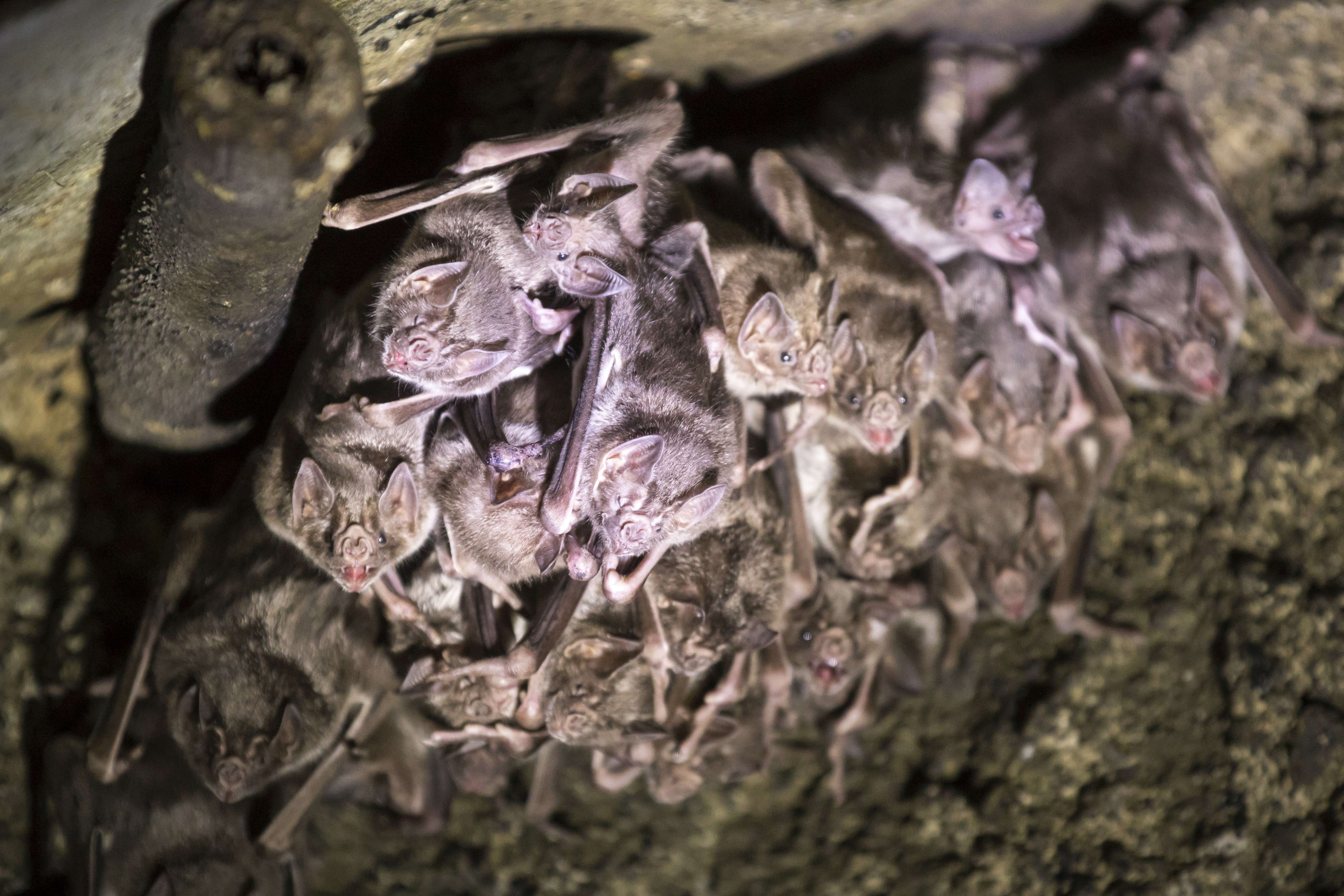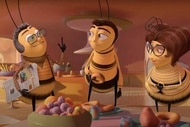Create a free profile to get unlimited access to exclusive videos, sweepstakes, and more!
Drinking buddies! Vampire bats feed as friends

Vampires are often solitary creatures, hunting in the dark, immortal but alone. Vampire bats, on the other hand, develop strong social bonds within their roosts. These sorts of relationships are uncommon in bats overall, but are a necessary component of species survival in vampire bats. New research by Simon Ripperger, in affiliation with the Smithsonian Tropical Research Institute, demonstrates these social bonds extend beyond the roost to include social foraging.
A blood diet doesn’t easily allow for fat storage, so vampire bats must feed fairly consistently in order to survive. “After two or three nights of unsuccessful foraging, they could die, Ripperger tells SYFY WIRE. “In a rainforest, it might be quite hard to find a boar or a rodent to feed on. Especially in younger or less-experienced bats; if they don’t find food that can be lethal.”
Strong social bonds in vampire bats are believed to relate to this unique diet, and tend to be concentrated among female bats. Mother bats nurse their young on milk, but pretty quickly begin feeding them regurgitated blood. Later, the offspring will also share blood with their mothers. Eventually, they begin sharing blood with other bats in the colony. Ripperger explains this is a sort of survival safety net. Because they must feed consistently, a failure in foraging can be offset by a shared meal once everyone is back at the roost. Making friends is quite literally a matter of life and death for a vampire bat.
In order to discover if these social bonds extend beyond the roost, Ripperger worked with a team of engineers and computer scientists to design small sensors which could be attached to a bat’s back. The sensors are capable of measuring proximity to one another and communicating back to an observer or control station.
Vampire bats regularly groom one another — part of those all-important social bonds — and the team was worried the bats might damage the sensors with their teeth during grooming. To avoid this, the sensors were packed in a 3D printed case before being applied to their backs using a latex-based surgical bond. After 10 to 14 days the sensors fell off, at which point they were collected, recharged, and then put back into circulation.
Analyzing the sensor data allowed the team to identify social relationships among individual bats by measuring the amount of time they spent in close proximity in the roost. That data was then compared with foraging encounters in the field.
They found that wild bats did not leave the roost together, indicating cooperative foraging may not be pre-planned. This could be another strategy for maximizing successful foraging. Importantly, comparison of foraging encounter duration was split along kinship lines. When two bats with an established relationship encountered one-another in the field, those encounters lasted significantly longer than bats with no relationship. When two bats met at the same feeding sight, friends were welcomed to join in, non-friends were chased off.
“You could imagine that if you and your cooperation partner go foraging alone, it’s likely at least one of you finds food. If you attract your cooperation partner to an open wound then you increase the likelihood the other is also feeding, which reduces the need to share food later in the roost,” Ripperger says.
Bat vocalizations may play a key role in this behavior, alerting cooperation partners to the site of a good meal. In working with captive vampire bats, researchers found bats are able to distinguish calls from specific individuals. This supports the notion that a call may not be an open invitation to anyone to join the table, but intended for those with whom an established relationship is present.
In other species, like insect-foraging bats, vocalizations are a necessary component of the hunt. They must use echolocation to home in on prey and those vocalizations can also serve as a dinner bell to any other bats in the area. In vampire bats, the situation is wholly different.
“A vampire bat can eat quietly on a cow withing giving apparent signals to others,” Ripperger says. “That’s why this is so exciting, we’ve seen them vocalize and look to the direction of other bats when they emit these calls. Those are signals they emit on purpose.”
When you’re walking (or flying) the tightrope of survival, it helps to have friends to prop you up. And when it comes to bats, those who drink together, thrive together.















